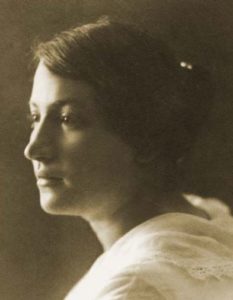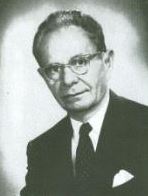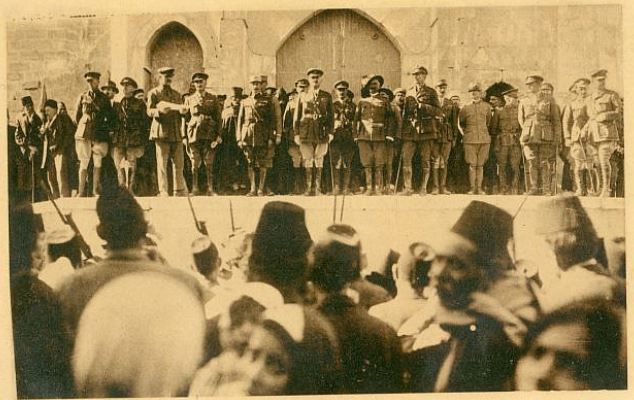Israel’s Joan of Arc

Sarah Aaronsohn
Sarah Aaronsohn (1890-1917) was born in Zikhron Yaakov to a Romanian-Jewish family which had settled in the Land of Israel during the First Aliyah to co-found a moshav. The moshav was later financed and supported by Edmond James de Rothschild (who renamed it Zikhron Yaakov after his father). Aaronsohn studied languages, and could speak Hebrew, Yiddish, Turkish, French, Arabic, and English. She married a wealthy Jewish-Bulgarian businessman and lived with him briefly in Istanbul. When the marriage unraveled, Aaronsohn returned to Israel. During her journey, she personally witnessed the horrors of the Armenian Genocide, and was deeply affected by what she saw. This inspired her to work against the Ottoman Turks, both to stop what was happening to the Armenians, and to prevent the same happening to Jews, as was rumoured at the time. Aaronsohn and her siblings started the NILI spy ring to supply important information to the British. (NILI stood for the Biblical words Netzach Israel Lo Ishaker, “the God of Israel does not lie”, from I Samuel 15:29.) Their spy ring grew to include 40 operatives, making it the largest British spy network in the Middle East during World War I. The information they provided was so vital that General Allenby later admitted he would not have been able to liberate the Holy Land without it. And without Allenby’s conquest, there would probably not have been a State of Israel (at least not so soon). Aaronsohn was also in charge of taking care of the Jews expelled from Haifa and Tel-Aviv by the Ottomans. At one point she worked with Lawrence of Arabia, and many believe the “S.A” to whom he dedicated his book The Seven Pillars of Wisdom is Sarah Aaronsohn. Unfortunately, the Ottomans caught one of Aaronsohn’s carrier pigeons to the British and arrested her shortly after. She was gruesomely tortured for days, refusing to give any information and insisting that she was the sole spy, thus saving the lives of many others. While being transferred to a different torture chamber, she asked to stop at home to change her tattered and blood-soaked clothes. Aaronsohn managed to get a gun and shoot herself in the head. She survived the blast, and suffered for another four days before succumbing to her injuries. In her suicide note, she wrote that she hoped the blood of martyrs like her would one day be avenged, and that her work would speed up the establishment of a Jewish state. History has shown that it certainly did. Aaronsohn was hailed as a new “Joan of Arc”, and is one of Israel’s great heroines.
The Spiritual Purpose of Jewish Exile and Wandering
Words of the Week
Before the Endlessness of God, the highest saint and the lowliest commoner are equal.
– Rabbi Menachem Mendel of Vitebsk (c. 1730-1788)

 Abraham Tzvi Idelsohn (1882-1938) was born in Latvia to a religious Jewish family. He studied to be a synagogue cantor. At 27, he made aliyah to Israel and worked as a musician and composer. In 1919, he opened a Jewish music school. A few years later, he left for Ohio where he served as professor of Jewish music at Hebrew Union College, the major seminary of Reform Judaism. Between 1914 and 1932 he published his ten-volume magnum opus, Thesaurus of Hebrew Oriental Melodies. Many consider him “the father of Jewish musicology”. His most famous melody is undoubtedly ‘Hava Nagila’. In December of 1917, British army general Edmund Allenby defeated the Ottomans and conquered the Holy Land for Great Britain. The Jews of Israel were elated, and celebrated the general’s arrival in Jerusalem. They asked Idelsohn to compose a song for the special occasion. Idelsohn remembered an old happy tune he had adapted from a Hasidic niggun. The song was a hit. A few years later, he asked his music class to write words for the song.
Abraham Tzvi Idelsohn (1882-1938) was born in Latvia to a religious Jewish family. He studied to be a synagogue cantor. At 27, he made aliyah to Israel and worked as a musician and composer. In 1919, he opened a Jewish music school. A few years later, he left for Ohio where he served as professor of Jewish music at Hebrew Union College, the major seminary of Reform Judaism. Between 1914 and 1932 he published his ten-volume magnum opus, Thesaurus of Hebrew Oriental Melodies. Many consider him “the father of Jewish musicology”. His most famous melody is undoubtedly ‘Hava Nagila’. In December of 1917, British army general Edmund Allenby defeated the Ottomans and conquered the Holy Land for Great Britain. The Jews of Israel were elated, and celebrated the general’s arrival in Jerusalem. They asked Idelsohn to compose a song for the special occasion. Idelsohn remembered an old happy tune he had adapted from a Hasidic niggun. The song was a hit. A few years later, he asked his music class to write words for the song. A young Moshe Nathanson (1899-1981) was in that class, and wrote a couple of simple lines based on Scriptural verses from Psalm 118. The rest is history. Nathanson was born in Jerusalem, the son of a rabbi. In 1922 he moved to Canada and double-majored in law and music at McGill University. He ended up studying at what is now the prestigious Julliard School of Music in New York. From there, he was hired to be the cantor of the first Reconstructionist Synagogue, and served in that role for the next 48 years. He wrote an important four-volume tome of liturgical songs. Nathanson also spent 10 years broadcasting Jewish music on American airwaves (“Voice of Jerusalem”) and dedicated much of his life to promoting Jewish folk music. Today, Nathanson’s and Idelsohn’s ‘Hava Nagila’ is the most recognizable Jewish/Hebrew song in the world, and a staple of every bar mitzvah and wedding. There is even a full-length documentary about it, called Hava Nagila (The Movie). This past year marked the song’s centennial anniversary.
A young Moshe Nathanson (1899-1981) was in that class, and wrote a couple of simple lines based on Scriptural verses from Psalm 118. The rest is history. Nathanson was born in Jerusalem, the son of a rabbi. In 1922 he moved to Canada and double-majored in law and music at McGill University. He ended up studying at what is now the prestigious Julliard School of Music in New York. From there, he was hired to be the cantor of the first Reconstructionist Synagogue, and served in that role for the next 48 years. He wrote an important four-volume tome of liturgical songs. Nathanson also spent 10 years broadcasting Jewish music on American airwaves (“Voice of Jerusalem”) and dedicated much of his life to promoting Jewish folk music. Today, Nathanson’s and Idelsohn’s ‘Hava Nagila’ is the most recognizable Jewish/Hebrew song in the world, and a staple of every bar mitzvah and wedding. There is even a full-length documentary about it, called Hava Nagila (The Movie). This past year marked the song’s centennial anniversary.